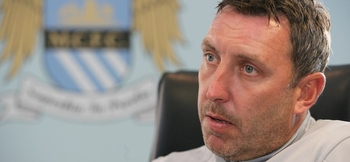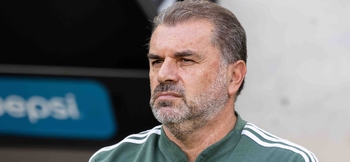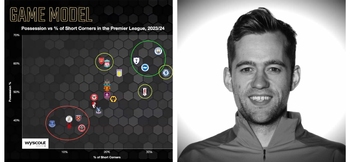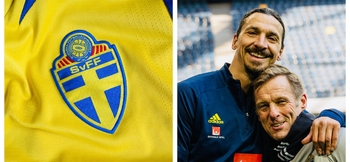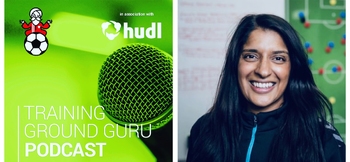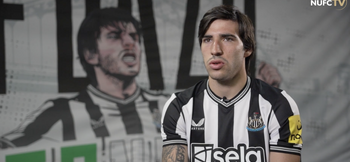Steve Harper: The DNA of a modern keeper
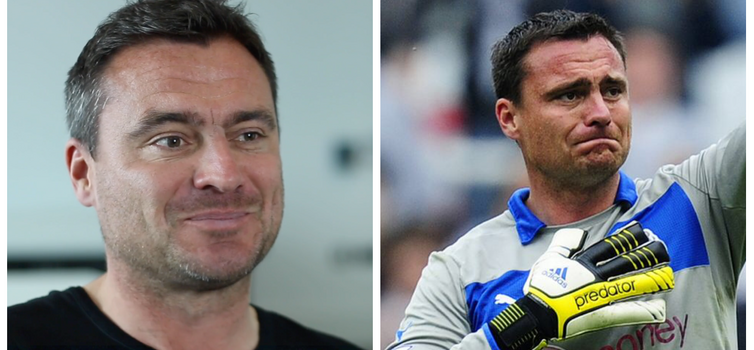
Harper was on Cohort 3 of the Master of Sport Directorship course at MMU
Written by Simon Austin — January 21, 2019
STEVE HARPER is the longest-serving player in the history of Newcastle United, having represented the club for 20 years from 1993 to 2013.
Since August 2018, the 43-year-old has been Lead Academy Goalkeeping Coach at the club, overseeing all the Magpies' young keepers and coaching the 17s to 23s.
At the same time, Harper has been studying for the Master of Sport Directorship qualification at Manchester Metropolitan University and is completing a dissertation on the difficulties and challenges of integrating VAR into football.
He told TGG about the changing world of the modern goalkeeper - and about his experiences on the MSD course.
FIRST LINE OF ATTACK
Steve Harper: For years, goalkeepers were the last line of defence; now they’re the first line of attack. Pep Guardiola has been hugely influential in this, with Barcelona, Bayern Munich and now Manchester City. The way City play in possession is incredible and their goalkeeper is key. It’s the model that people are trying to replicate now.
Ederson is fantastic with the ball at his feet, as we know, but Guardiola demands ALL his keepers operate in this way. I watched their Carabao Cup game against Burton Albion (semi-final first leg which City won 9-0) and Arijanet Muric was up near the half way line at various points in the match. I was thinking ‘he’ll be overlapping next!’
He was comfortable enough to come up the field, receive the ball and play what would have been seen as a risky pass in the past. Keepers are becoming much more comfortable with either foot nowadays.
Ultimately, you’ll still be judged on making key saves at key times in a game as a goalkeeper - that remains fundamental. After all, it’s no good being a fantastic footballer who doesn’t make saves, because you may as well just put gloves on an outfield player. It’s also important to be able to deal with crosses and set pieces into the box, especially with the quality of delivery we see nowadays and the design of the modern football.
Traditionally, shot stopping and dealing with balls into the box would have been enough for a keeper, but not any more. Being comfortable with the ball at your feet is a requirement too.
You can be a great shot stopper who isn’t comfortable with the ball at your feet in the lower leagues, but this will limit how high you can rise in the game, so we work hard on developing dynamic, all-round goalkeepers at the club.
Harper's thoughts on the MSD course at Manchester Met:
When I was 18, I had a place at Liverpool John Moores University to do a sports science degree, but deferred it for a year to go into pro football. I never went back and had an academic itch that has needed scratching ever since.
The MSD course has been tough and challenging, but I’ve loved every minute. I’ve met some wonderful people, both among the staff and students, and have made some lifelong friends.
I enrolled because I don’t think there are enough people in boardrooms in England with experience of playing the game. In the Sporting Director role it’s important to understand players. You are responsible for recruitment and also need an awareness of departments like sports science and the Academy.
I’m currently a goalkeeper coach and am enjoying it, but this qualification opens doors. It’s a big world out there and hopefully this will lead to further opportunities. The course components are leadership, leading a high performing organisation, governance and managing innovation and change, as well as producing a dissertation on sport in practice.
The course has genuinely been brilliant. I’ve loved it and will love it even more when my dissertation is submitted!
PHYSICAL PROFILE
I’m just over 6’1” and there was a point in my career where clubs seemed to become obsessed with 6’5”, 6’6” goalkeepers. Now the tide is turning. If you’re 6’5” or 6’6”, that’s a long way for the signals to get from your brain down to your feet and we seem to be going back to the 6’2” range.
The game got so much faster even while I was playing and that’s continued. The physicality, agility, speed, ability to change direction quickly are phenomenal at the top of the game now. Sports science, nutrition, even the standard of the pitches have all moved on too, helping the game to become much faster. That will continue and keepers will have to move with it too.
All our full-time players will now have their own individual strength and conditioning programme and they’ll register how they feel, how hard they feel the session was, and their levels of fatigue, both before and after every session. They’re very closely monitored and between all departments the player’s welfare is the key concern.
TEAM DRILLS
When I was playing, we would regularly go off to have half an hour with the goalkeeping coach. That seems to be getting shorter now and the keepers get involved in possession and passing drills a lot more. There might be four of five keepers and it’s difficult to create reality-based possession sessions if they’re on their own as a group. When you get involved with outfield players you have to make decisions in possession – do you take it away from trouble, which foot do you use, can you split the lines to find a pass? The scenarios become more realistic.
CATCH OR PUNCH?
I was always a big advocate of trying to catch the ball as much as you could, but it depends on the pressure you’re under. If you’re going to take the ball amidst a lot of traffic and there’s a risk of dropping it, then you would look at punching it clear into a safe area.
Many modern keepers will also look at punching into an area to start a counter-attack, certainly from a defensive set piece. That is how much the game has moved on. From a corner or wide free kick, if the ball is getting slung into the box, you would practise punching into areas for the counter-attack.
If you catch and then throw or pass the ball out, it’s slower than if you punch direct to a team-mate. With the pace that teams have, like Manchester City and Liverpool, this can be a big weapon and you’ll see it being deployed in games. If a goalkeeper can clear the ball into an area to spring a counter attack then why wouldn’t you practice this?







